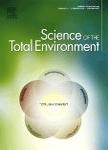版权所有:内蒙古大学图书馆 技术提供:维普资讯• 智图
内蒙古自治区呼和浩特市赛罕区大学西街235号 邮编: 010021

作者机构:Biotechnology Program Center for Sustainable Development College of Arts and Sciences Qatar University Doha2713 Qatar Laboratory of Environmental Bioprocesses Centre of Biotechnology of Sfax BP 1177 Sfax3018 Tunisia Environmental Sciences Program Department of Biological and Environmental Sciences College of Arts and Sciences Qatar University P.O. Box 2713 Doha Qatar
出 版 物:《Science of the Total Environment》 (Sci. Total Environ.)
年 卷 期:2025年第963卷
页 面:178452页
核心收录:
学科分类:0710[理学-生物学] 0830[工学-环境科学与工程(可授工学、理学、农学学位)] 08[工学] 0805[工学-材料科学与工程(可授工学、理学学位)]
主 题:Microorganisms
摘 要:Polyhydroxyalkanoates (PHAs) are biodegradable and biocompatible polymers that can replace conventional plastics in different sectors. However, PHA commercialization is hampered due to their high production cost resulting from the use of high purity substrates, their low conversion into PHAs by using conventional microbial chassis and the high downstream processing cost. Taking these challenges into account, researchers are focusing on the use of waste by-products as alternative low-cost feedstocks for fast-growing and contamination-resistant halophilic microorganisms (Bacteria, Archaea…). This is of great importance since these extremophiles can use low-cost substrates, produce high PHA content of copolymers or different PHA monomer compositions. They can present high potential for reducing the costs of PHA fermentation and recovery processes, making their use in commercial applications easier. However, little is known about the potential of halophiles in advancing the PHA production from renewable waste materials at lab-scale and their successful implementation at industrial-scale. This review presents actual advances in PHA production by halophilic pure/engineered species (e.g. Haloferax mediterranei, Halomonas spp.) and mixed microbial consortia (MMC) using organic waste streams. The development of optimal PHA production process involves robust genetic engineering strategies, advanced fermentation processes using mixed microbial consortia versus pure/engineered strains as well as algal biomass as feedstocks. © 2025 Elsevier B.V.